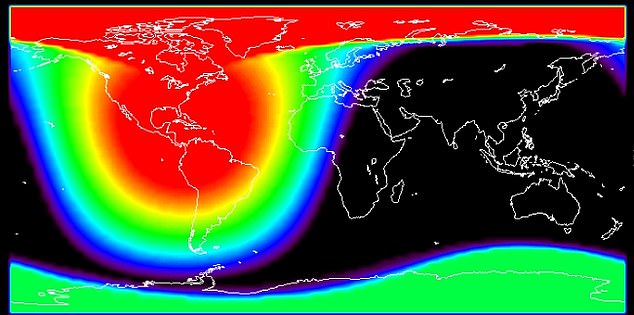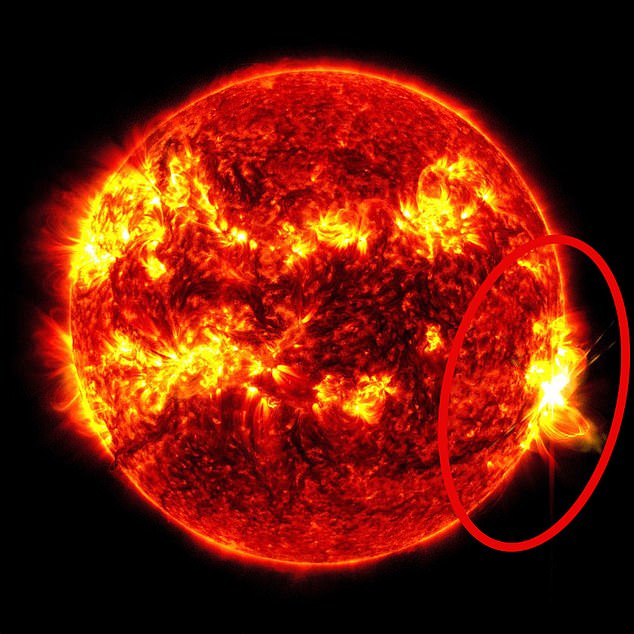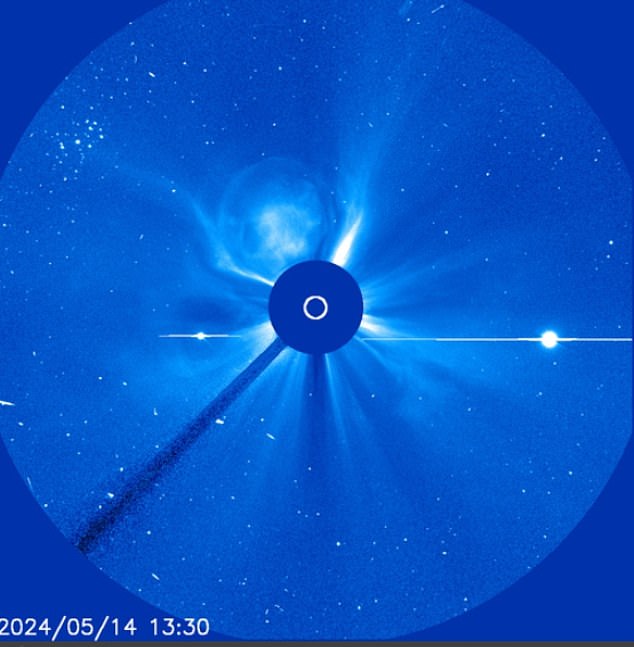The National Oceanic and Atmospheric Administration (NOAA) indicated disruption across North America at 12:51 a.m. ET.
The solar flare, classified as X8.8, was the strongest of this cycle, which began in 2017; NOAA says it was a Level 3 (R3) radio outage on a scale of one to five.
The flow was triggered by a sunspot that has been hitting our planet for the past few days, which NOAA says is the size of the spot that caused the worst solar storm on record.

The National Oceanic and Atmospheric Administration (NOAA) reported communications disruptions in North and South America around 12:51 PM ET.
Space weather physicist Dr Tamita Skov told DailyMail.com:
“It would have been our first R4-level radio outage, but it was partially blocked by the sun.
“The region that gave off the flare is now mostly behind the western limb of the sun, so we can no longer see it.”
The current solar cycle began in mid-December 2016.
“We are now at solar maximum,” Skov said.
“It is difficult to say whether we have passed the peak of the solar maximum or not. (I doubt it because I think this cycle will have two peaks like the last cycle.) Time will tell.
The sunspot causing chaos in space is AR 3664, which grew to the size of the one that caused the Carrington Event of 1859, which set fire to telegraph stations and disrupted communications around the world.
AR 3664 orbited out of sight of Earth on Tuesday, but said goodbye for the last time.

The solar flare, classified as X8.8, was the strongest of this cycle, which began in 2017, at a high Level 3 (R3) on a scale of one to five.

A powerful X-class flare erupted from the sun just over two hours before a power outage was reported across the US.
Subatomic fragments of electrons and protons from the flare could also hit our planet, cascading to the surface.
The particles have the ability to disrupt satellite communications, pose a radiation hazard to astronauts and disrupt power grids on the ground.
NOAA predicted a 60 percent chance of that happening Tuesday.
The event, called a radiation storm, is driven by the magnetic field that is emitted from the sun into our solar system.
As the sun rotates, the magnetic fields emanating from it bend as they pass through the orbits of the planets, creating a spiral structure known as a Parker spiral.
Charged particles from a solar flare can be trapped in these spirals, launching them toward Earth when they would otherwise miss our planet.
Tuesday’s flare follows several days of solar activity that led to what NOAA warned could be the worst solar storm in 165 years.
The agency issued a Severe (G4) geomagnetic storm watch late Thursday, the first in 20 years.
Geomagnetic storms occur when high-energy particles from solar flares, ejected by the sun, reach Earth.
In the immediate aftermath of the storm last Friday, farmers in Minnesota, Nebraska and other parts of the American Midwest experienced satellite outages in the global positioning system (GPS) equipment they depend on to operate their equipment.
Many farmers now use GPS to more efficiently and accurately plant crops in straight rows, reducing errors such as overlapping seedbeds or unused soil gaps.
But the storm also brought stunning Northern Lights across the globe.
Millions of Americans from Maine to Alabama were also able to see the natural light show.